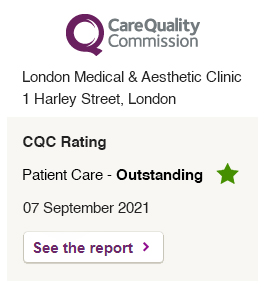The Times
Let’s face it, we all have some cellulite
It’s cellulite season again — that tiresome time of year when celebrities fear the flash-bulb-up-the skirt and when magazines are fit to burst with draconian advice on how to “banish orange-peel thighs”. From dry-brushing to mud wraps to full-on medical intervention, the options are many and varied, and usually quite expensive. In bedrooms and bathrooms across the nation, countless women do that frowny-looking-over-the-shoulder thing as they gaze at the dimples on their thighs in the unforgiving morning light, sigh deeply — and prepare to part with their cash.

Dr Ayham Al-Ayoubi: It is, almost exclusively, a female problem. This is because a) men are physiologically less prone to dimply fat and b) they’re not expected to show as much flesh as women. It is practically part of the contract now for famous actresses to attend all red carpet events dressed in little more than their underwear, while their male counterparts get to cover up with a well-cut suit. Under such circumstances, the reverberations in a person’s inner thighs take on a new — and disproportionate — meaning.
The truth is, very few women get past puberty without developing a bit of cellulite. Only those with extremely low levels of body fat are immune (marathon runners, for example). Unless you’re prepared to hone your physique to the standards of an athlete and never eat another slice of Battenberg, you just have to accept that bits will wobble where you would rather they didn’t.
This is easier said than done in a culture that expects all women’s bodies to be box-fresh, regardless of how many babies they’ve had or how old they are. One she passes 40, a woman is not judged by the children she’s raised or the work that she does — but by whether or not she can wear a sleeveless dress. If she can’t, well — what on earth is the point of her?
I exaggerate slightly for effect, of course, but part of me means it. This obsession with cellulite is nothing more than a way of making a person feel inadequate and worthless. It’s also an excellent revenue stream for those clever enough to convince the public that their product really works.
Personally, I’ve never found a cellulite cream that works. Last week, Biotherm’s D Code caused a bit of a storm — but I have yet to try it, and I’ll leave it to you to decide whether you can afford £37 to find out (if you do and it works, drop me an e-mail and I’ll gladly tell the nation). There are some reasonably effective medical treatments, such as Velashape (a vacuum heat treatment), but they tend to be very expensive, not to mention sometimes painful — and the results vary wildly. Besides, can you be bothered so spend hours in paper pants having your bottom vacuumed by a total stranger?
So what can you do? Well, dress appropriately, for a start: wear a sarong on the beach, keep your skirts on the knee and judge your sleeve length. A woman doesn’t have to be half-naked to be beautiful: only the other night I was watching Joanna Lumley wafting up the Nile Delta for TV in floaty trousers and a long shirt: she looked gorgeous, and was showing virtually no flesh at all.
Elsewhere, don’t run in direct sunlight. Keep skin exfoliated and moisturised — and, if you can, use a light self-tan, since a bright white bottom looks worse than a brown one. Don’t clench the muscles in your rear — a soft stance shows up cellulite less. Most of all, don’t worry too much. Because I can assure you that every other woman feels the same way.
To view Dr Ayoubi in the media click here.





